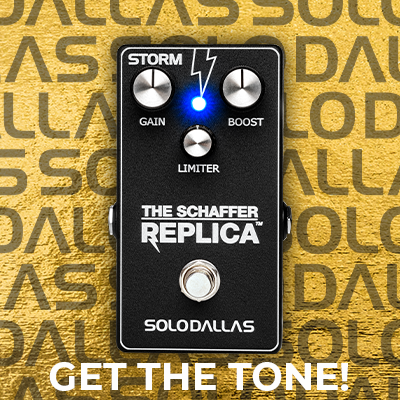Someone had posted a cover of this song days ago. And it just reminded me that I love this song and I had never covered it. So here you have it. Tough one, as always with AC/DC going for feel.
Now onto some technical aspects.
As never before, I think I have nailed – or went really, really close – the original “tone” of this recording. I put special care into getting it right. If your ears too tell you this and you are interested, here is how I did it.
For both rhythm and solo(s) guitar I went for a one microphone only, as I thought that older recordings may have easily been recorded with one microphone for simplicity of approach. The microphone however, was both off axis and off center, meaning that it was not facing the cloth completely, nor it was put on the center of the cone. It was about 5 centimeters off of the center of the cone, on the right side, going towards the center part of the cabinet. Also, the mic head was a few degrees off axis (see photo).
As for the amp head, I used a 1959, since I think at this time they mostly used a 1959 for Angus. Now, I tried one specific thing, that was to put everything on 10, except for bass that was on 0. This type of thing was very much used back then.
I then set the guitar volume and tone controls at settings that sounded good. For rhythm, the guitar volume knob was at 5-6, and the guitar tone knob was at 6-7. I am not sure what influences more the tone on this song, whether it is the microphone placement or this way of setting amp and guitar. Keep in mind I also always equalize in post production, which I think was always done in recording and mixing. Equalization curves to be added.
For solos, I brought down the amplifier volume to 5. I experimented a LOT with higher volumes, but it was getting too aggressive. Angus here is really delicate. On the guitar, the volume knob was at 10 and the tone varied a bit from take to take, but it was closer to 10.
For solos, I used the same microphone positioning, though I may have moved it very slightly to find even a better position, since I was specifically looking for a distinct tone which is the one you hear on record. That is, a very fine resonation of the cabinet. That “hollowness” that has chased me since I was a kid. I love that hollow-like tone. Probably among my very favorites.
To do that, I really searched for a specific spot in the cabinet (about the same position described above, see pic) and also, I raised the equalization settings on the five hundred Hz band higher as this specific band gets us exactly that kind of resonation. Please also see equalization settings for solo tone.
Microphone positioning: note how it is likely on the outer border of the speaker. Probably even further. A 4×12 Marshall cabinet has a LOT of stuff going on inside when the speakers are pushing. So it is really important to put the mike in a position where it will capture many different things.
Also of interest (it should be to you!!!! Don’t underestimate the power of a GOOD EQUALIZER in post – and at times, even in pre) the equalization curve. What you see is a pretty big spike on the five hundred Hz frequency. That spike enhanced that hollowness that you hear. Also added some brightness on the 2k and above, as having the microphone off axis and off center will detract bright freqs.
So basically – learning as I do this for all of us – I understand that the equalizer should be used to enhance characteristics of the tone that you already should have captured in your recording. This is why it is VERY important to have a good take with an excellent microphone positioning that will let you later on bring out the best of your performance.
Please note: the image below refers to solo equalization. Rhythm was left almost flat.
Guitar was the terrific 1971 Gibson SG Standard, as I was willing to use an accurate tonal spectrum on this one.
Regarding the stereo positioning, I have set on a sort of standard where I mute the right channel of the original recording (Angus), bring the left channel into mono (center position), add my own version of Angus and put it on the right side of the stereo position, and add solo(s) on the left side of the stereo position. This way, you’ll be clearly hearing me, the parts and the tone of the guitar a lot better, for debunking and pleasure.
I hope you’ll enjoy it 🙂
Welcome to 2011 at SoloDallas.net!

